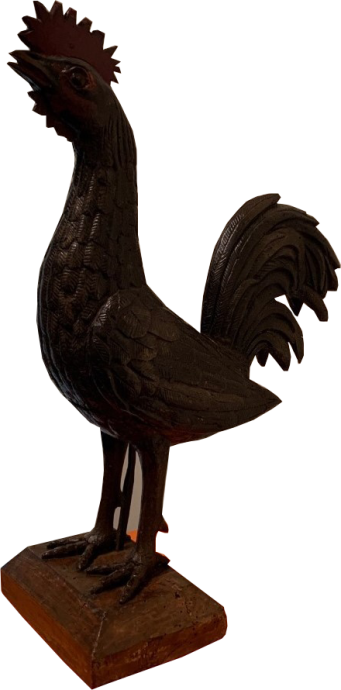


Rooster
, late 15th to early 16th centuryRooster
Description
This polychromed wooden rooster likely served as a heraldic symbol for an Italian family or town between the late fifteenth and early sixteenth centuries. Sculpted with naturalistic details, the body of the roster is carved from a single piece of wood, and the legs and tail feathers have been created separately and attached with glue. The sculpture is securely mounted on a sturdy wooden base with bevelled edges.
An expertise by Alberto Bruschi identifies this carving as a work from Central Italy from the High Renaissance (full appraisal available on request). The original coat of paint is intact with only minor losses consistent with the antiquity of the item. Conservation treatments have recently restored the polychrome and repaired cracks in the wood (full report available on request).
Associated with bravery, victory, and watchfulness, the rooster was often featured in so-called “canting arms” represented the owner’s name (either a person or a town) in a visual pun, or rebus. With the Italian name for rooster being gallo, the sculpture might allude to family names such as Galletti, Galluccio, and Galli or city names like Gallipoli and Gallarate.